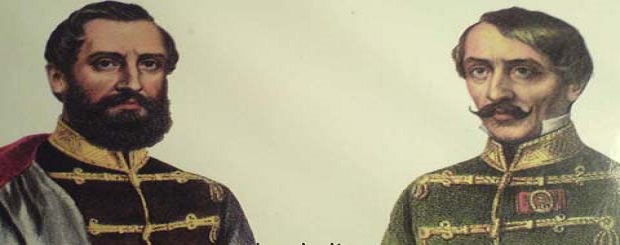
26 february 2016
Two of the thirteen military leaders of the Hungarian War of Independence of 1848 who suffered martyrdom on 6 October, 1849, Erno Kiss and Vilson Lazar were of Armenian nationality.
It wasn’t well known, that in 1848-49 how the Hungarian Armenians assisted the Hungarian nation’s fight almost beyond their ability.
The Hungarian Revolution of 1848 was one of the many European Revolutions of 1848 and closely linked to other revolutions of 1848 in the Habsburg areas. The revolution in the Kingdom of Hungary grew into a war for independence from the Austrian Empire, ruled by the Habsburg dynasty.
The representatives of the almost entirely Armenian populated Transylvanian cities at that time, Szamosujvar and Erzsebetvaros, how enthusiastically advocated in favour of the unification of Hungary and Transylvania on the Diet of Transylvania in 1848. Armenians welcomed the liberating Honveds of General Bem first at the end of December, 1848 and again in March, with a feeling of great joy and tables laid with food. But soon the Emperial forces defeated them and many Armenians died.
The Hungarian Armenian population lived not only in these two cities. According to the contemporary statistics in 1848 the Hungarian (2000) and Transilvanian (10,000) Armenian population consisted of up to 12,000 inhabitants.
The Hungarian Armenians were mostly the descendants of the Armenians who had settled down in Transylvania in 1672. The reasons for their appearance in Hungary and being dispersed throughout the country can be traced back to their professions.
Being mostly merchants and craftsmen, they continuously moved to different regions of Hungary and Transilvania from the 18th century.
During 18th century many Armenian families got financial and political power.
There were about 70 Hungarian Armenian officers fighting under the national flag in 1848-49.
After a series of serious Austrian defeats in 1849, the Austrian State came close to the brink of collapse, thus the new young emperor Franz Joseph I had to call for Russian help in the name of the Holy Alliance. Czar Nicholas I answered, and sent a 200,000 men strong army with 80,000 auxiliary forces.
Finally, the joint army of Russian and Austrian forces defeated the Hungarian forces. After the restoration of Habsburg power, Hungary was placed under brutal martial law.
The anniversary of the Revolution’s outbreak, 15 March, is one of Hungary’s three national holidays.
ArmenianHistory.com
http://www.horizonweekly.ca
